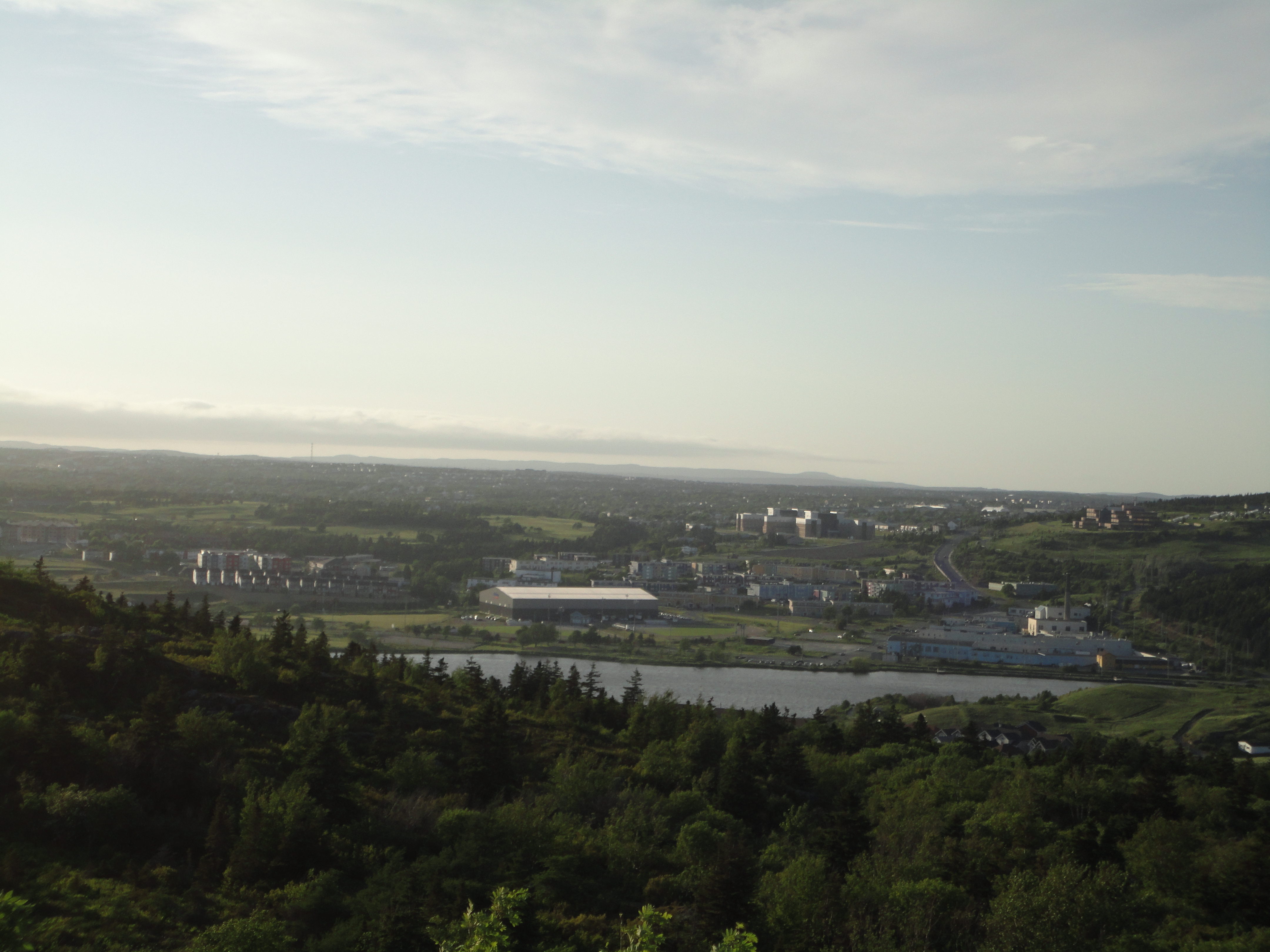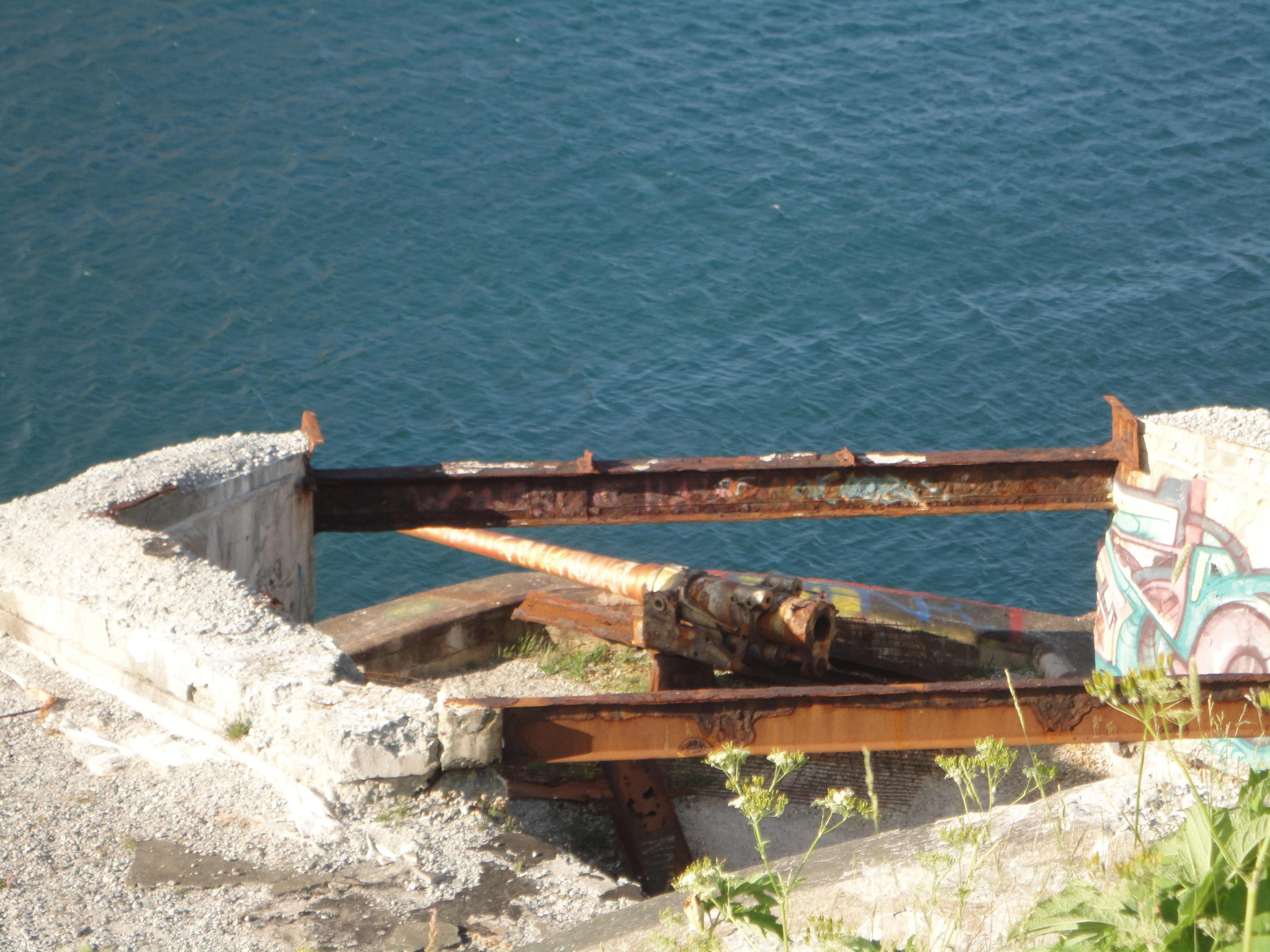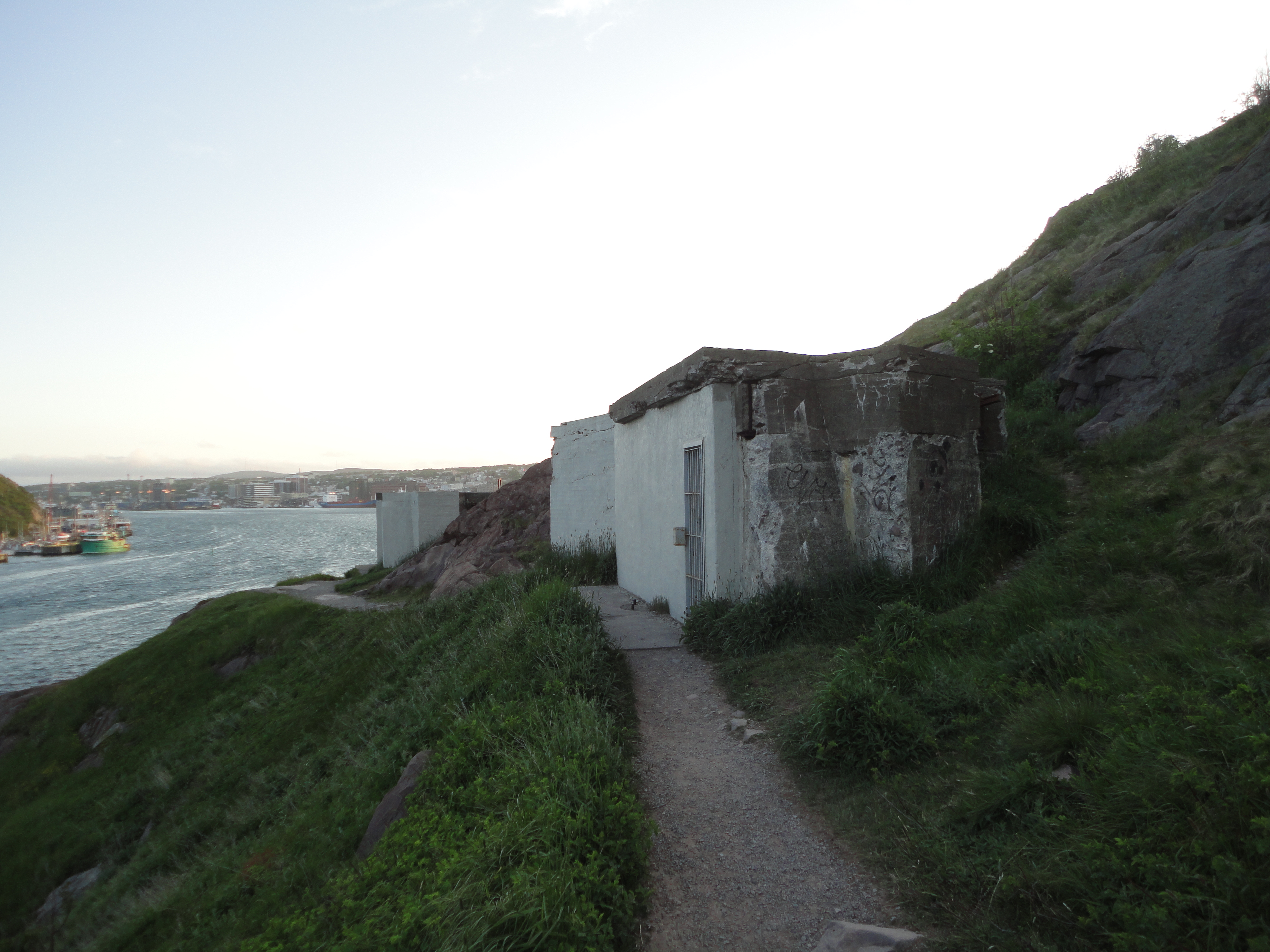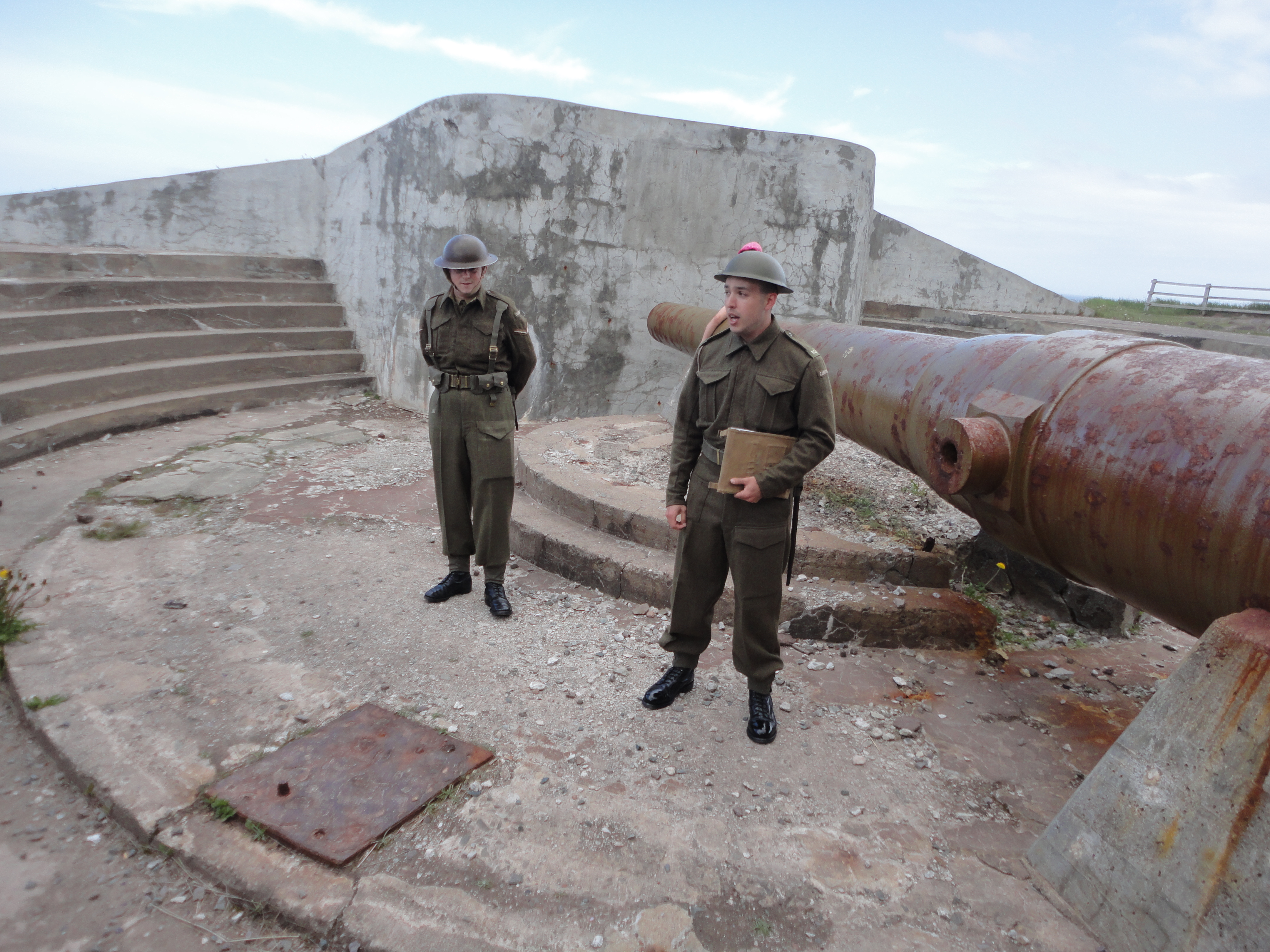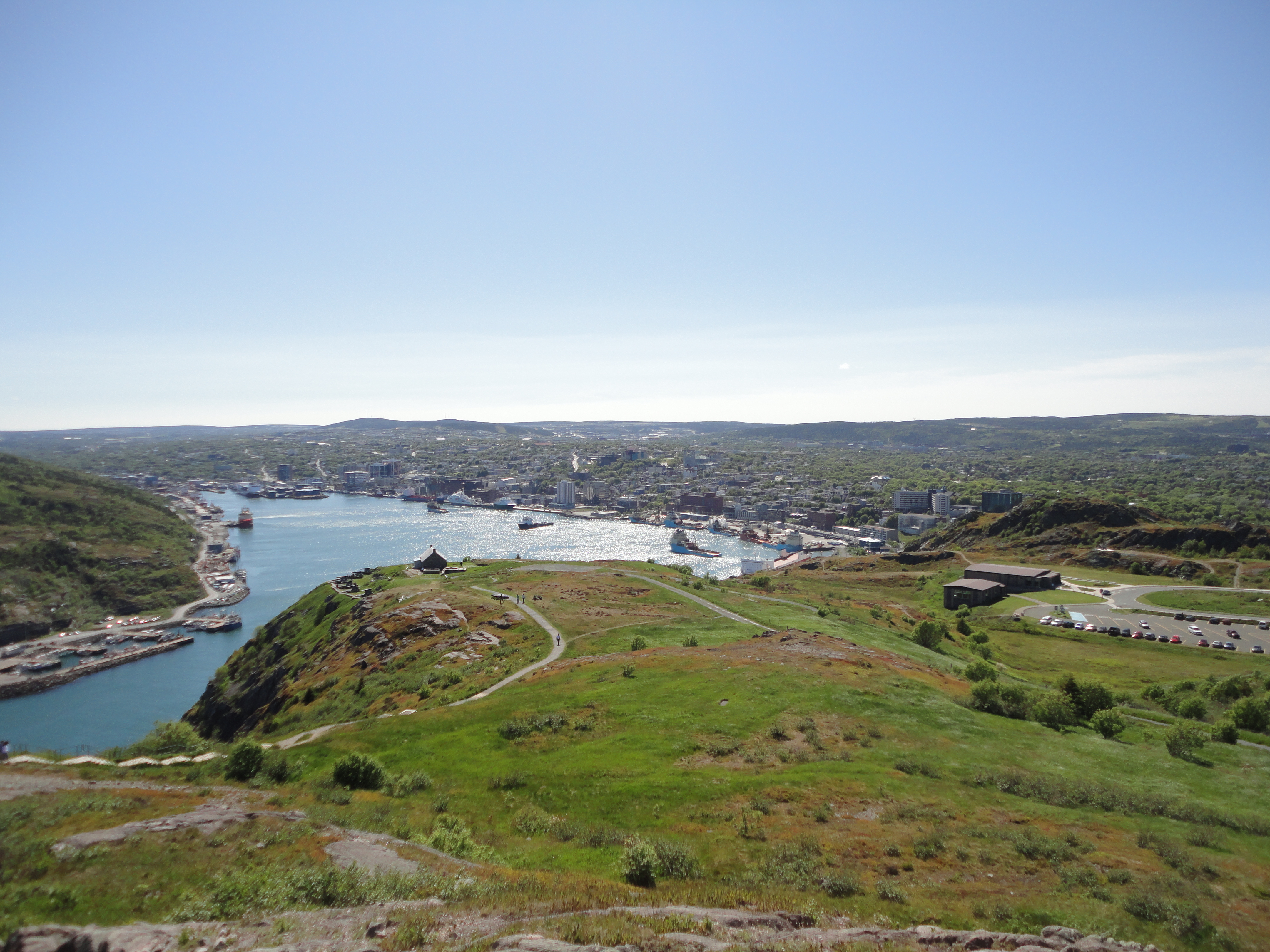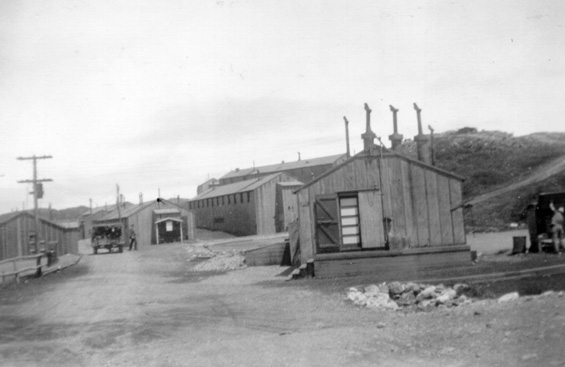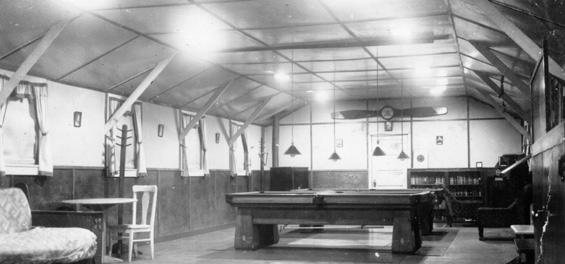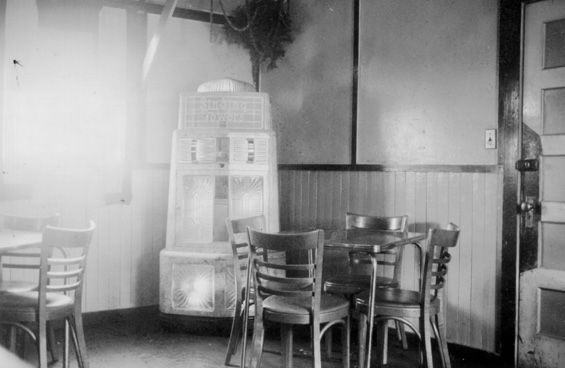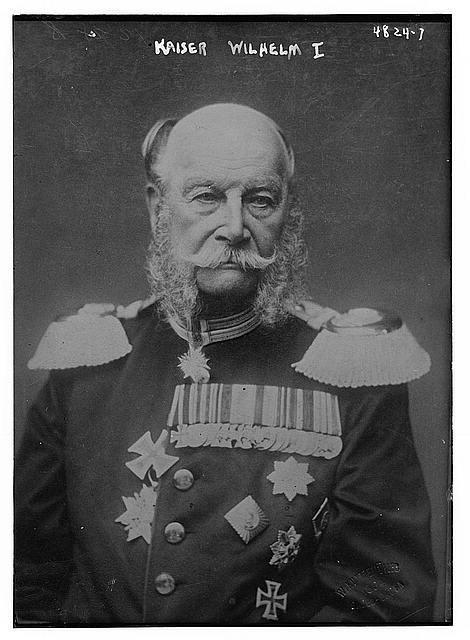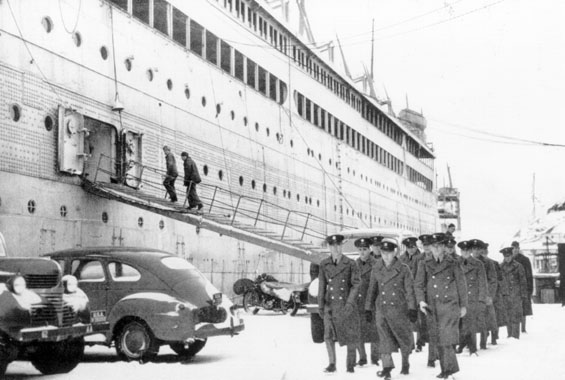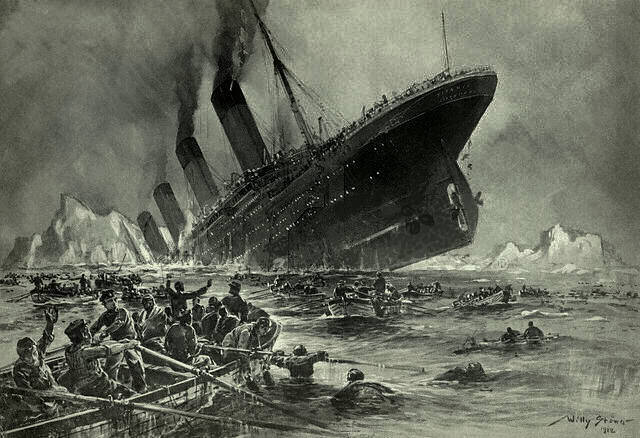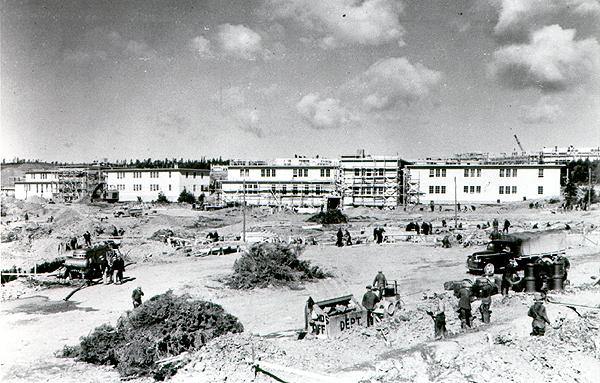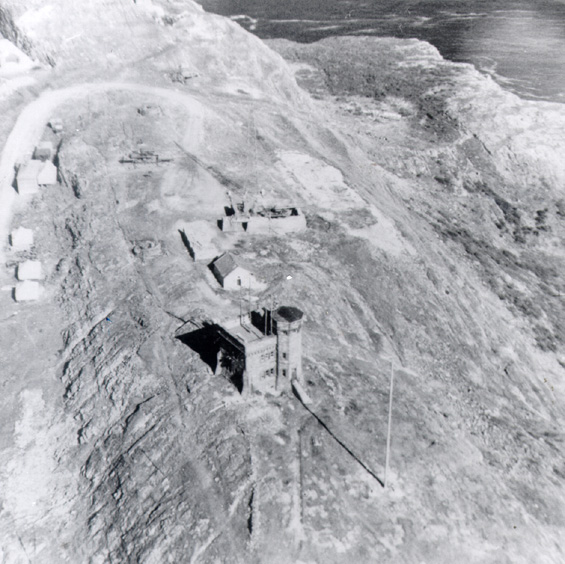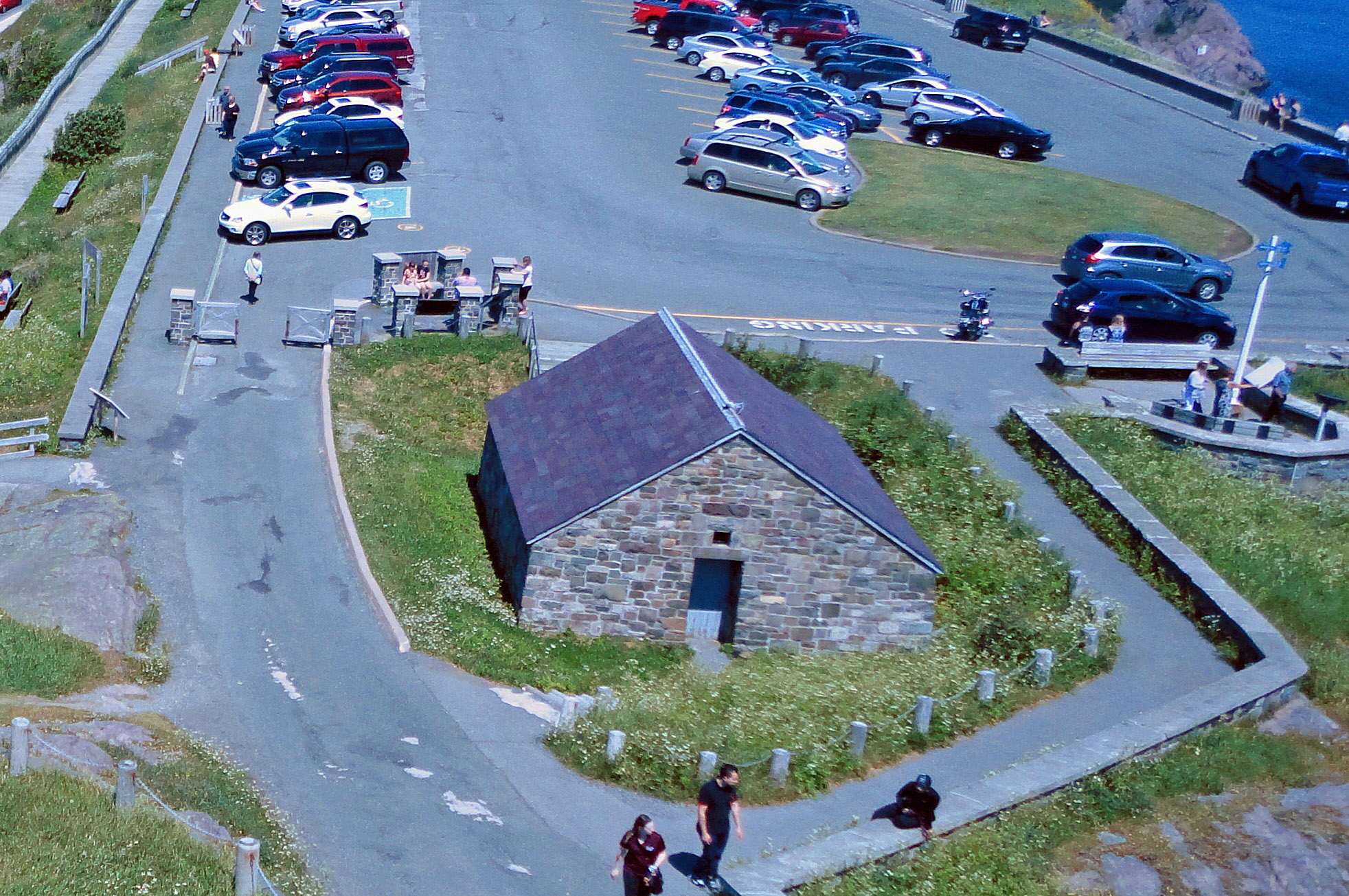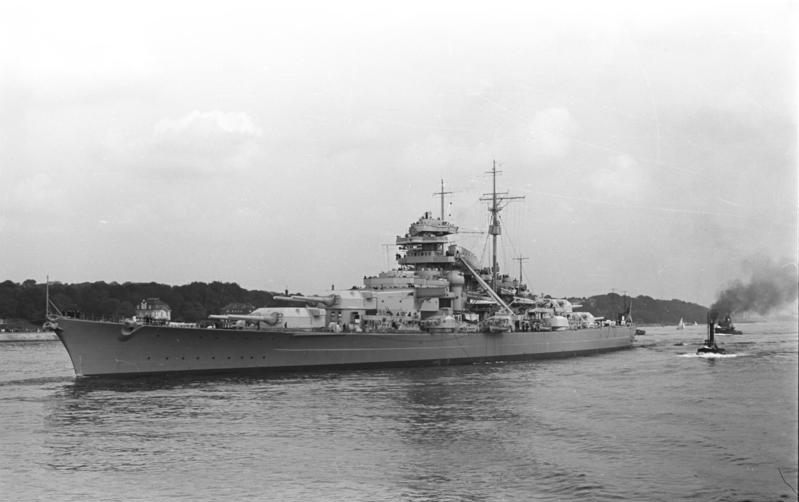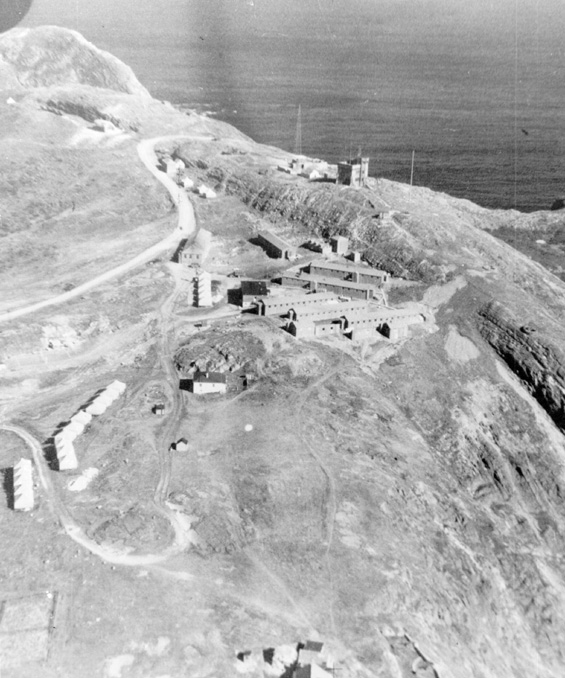[German Battleship Bismarck]
The Bismarck will never make it this far on its maiden cruise this is just to illustrate the difference in range of guns. If the Bismarck had attacked it would be able to fire at will and the US and Canadian Coast Artillery could do nothing about it. The main fear in St. John's however was German U-Boats.
US Units stationed at Signal Hill went through many name changes over their time in St. John's here are their final names:
Battery C 24th Coast Artillery Separate Battalion [155mm]
421st Coast Artillery Battalion (Composite)(Antiaircraft)
Battery D 24th Coast Artillery Separate Battalion [8 inch rail gun]
The structures built at Signal Hill were temporary structures that came down almost as quickly as they went up. The temporary structures included 18 barracks for 478 men, 2 mess halls, 2 rec buildings, a dispensary, post exchange, machine and carpenter shops, sewerage and refrigeration plants, pump house, and a tennis court. Many of these structures were located below the summit on the west side of the hill. By the summer of 1944 there was a small radar station near George's Pond. One is one of two Quonset huts built near George's Pond. The other was a magazine for ammunition which is still fulfilling that role to this day for Parks Canada's historic weapons programs.
[View of Cabot Tower many of the US built temporary structures.]
[Modern view of where many of the temporary US structures were built.]
[Barracks and Mess hall, A, B, C, and D Battery, Signal Hill]
[Day Room, B & D Battery. Located on Signal Hill, St. John's, Newfoundland, this room featured a pool table.]
[B and D Battery Coast Artillery, US Army, PX canteen.]
[Modern view of US built Quonset huts built near George's Pond]
The US Army will man some of its batteries till August of 1945. When the Air Force was created from the Army Air Corp Fort Pepperrell became an Air Force Base. The last US military personnel were withdrawn from Fort Pepperrell on May 15, 1960. The base was finally handed over to the Crown on August 10, 1960. Nowhere near using the whole 99 year lease. The US Naval Station Argentia will be leased longer with the US not withdrawing and handing the base over till 1994.
While going through several online archives range from the US Library of Congress, Provincial Archives of Newfoundland and Labrador, German Archives, and many others I came across the picture below.
This Picture is of Private Andrew Shestock receiving the Soldiers Medal from Lieutenant Colonel E.E. Reid of the Newfoundland command for saving a Newfoundland citizen from drowning. Not only were these US Service men protecting the valuable harbor for the Allied war effort they were an important part of the community of St. John's and Newfoundland and Labrador. In a war where over 60 million people were killed this is just one shining moment during that time where at least one more person got to go home at the end of the day.
What I have been up to...
Weeks three and four were largely the same as the first two weeks. I.e helping with the noon gun and range for the Tattoo. There was hope to get me to the other sites in the field unit such as Castle Hill, Hawthorne Cottage, Ryan Premises, and to the Park Terra Nova. Unfortunately because of things going on in St. John's unfortunately those trips never happened. Looks like I may have to go back some day. Friday the last day working up there was a wet morning. Thus the noon gun did not get fired on my last day. Friday I also helped make rations for the second Camp of Instruction program which was the immersion program about World War 1 I have written about in a previous post. This involved removing labels from modern day cans of meat and fruit and placing reproduction labels on the cans and packaging biscuits in wax paper for the bread ration (Think the WW1 version of hardtack.)
This post might mark the end of my detail at Signal Hill but come back in the next week or two I will post about my return to PEVI, the future, and just to wrap up this whole adventure.
